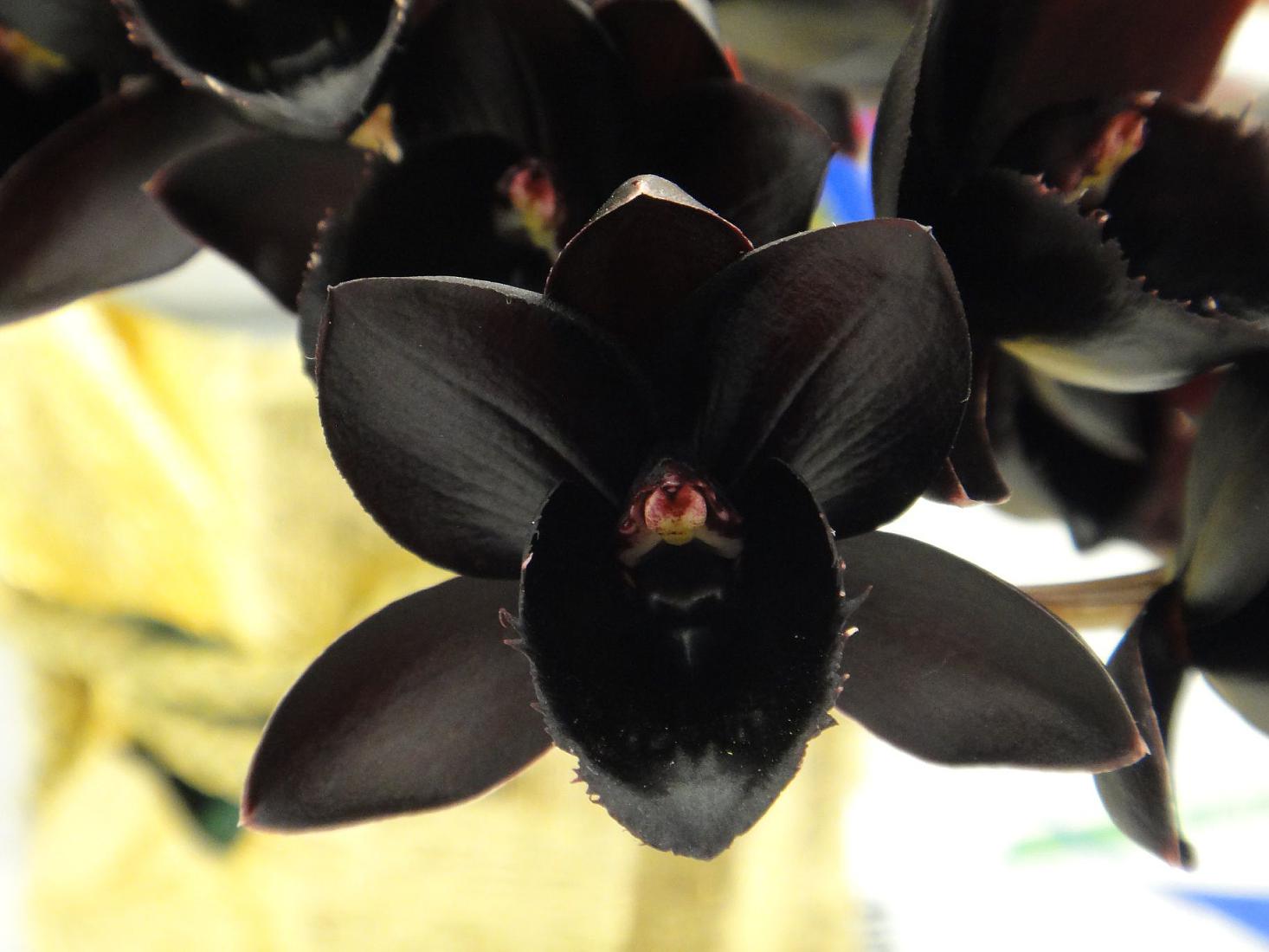Quite often, you can hear the story of how a donated or purchased orchid begins to wither after just a few weeks. In such a situation, it remains only to wait for the next year, because the plant can bloom again, but the expectations are in vain.
An orchid is a demanding flower and it is not surprising that it begins to wilt as soon as it gets into the home. In order to maximize the flowering period and prevent the plant from simply dying, it is necessary first of all to understand the causes of wilting and try to solve them by creating favorable conditions.
Content
Why the orchid does not bloom
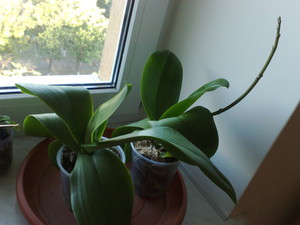 There are times when a flower stops blooming while continuing to increase its green mass... As a result, you can get a live orchid, but with an unpresentable look. There may be several reasons for such a development of the root system and green mass:
There are times when a flower stops blooming while continuing to increase its green mass... As a result, you can get a live orchid, but with an unpresentable look. There may be several reasons for such a development of the root system and green mass:
- lack of light;
- bad light;
- resting regime is violated;
- improper watering;
- sudden changes in temperature.
Lack of lighting
A small amount of lighting is one of the main reasons that the flower at home begins to fade. Some orchid species, such as phalaenopsis and papiopedilum, can tolerate a lack of light, but all other varieties begin to die even in partial shade.
More often than not, creating artificial lighting or placing the pot in a place with lots of sunlight will solve the blooming problem. Excess sunlight in some cases, it harms the orchid, so you should follow it for the first weeks and find the optimal middle of the required amount of ultraviolet radiation.
You can determine the abundance of sunlight by foliage. If it is light green, then there is enough sunlight to bloom and grow the green mass. Yellow color indicates a large amount of ultraviolet lighta, and in this case it is better to reduce its concentration by setting the pot in partial shade. Leaves with a bright green color indicate a lack of sunlight.
Root system diseases
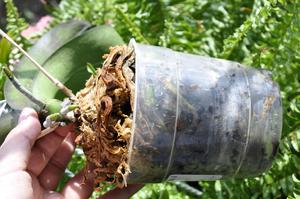 The root system for any plant is the center of vitality. If the plant begins to wither, then a disease of the root system may be one of the reasons. PThere can be a lot of problems with roots, but it is even more difficult to identify and overcome the disease in time. After the roots begin to rot, the orchid continues to bloom for some time.
The root system for any plant is the center of vitality. If the plant begins to wither, then a disease of the root system may be one of the reasons. PThere can be a lot of problems with roots, but it is even more difficult to identify and overcome the disease in time. After the roots begin to rot, the orchid continues to bloom for some time.
Problems can begin at any time and for various reasons, but improper watering is most often to blame. If you constantly pour a flower, then this almost always leads to the fact that plant roots begin to rot and stop developing... Another way to identify orchid disease is to look closely at all the leaves. If they begin to decrease in size over time, then rotting of the roots is to blame.
Root decay can be avoided by permanent plant transplantation.Firstly, it is simply useful for the orchid, since it will not linger in the old substrate, and secondly, it will be possible to visually determine the state of the root system.
Flowering period
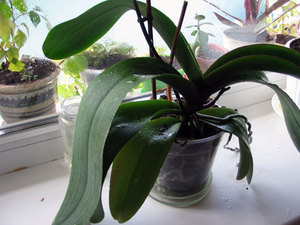 Not always diseases or improper care can cause poor flowering of a plant. In some cases, the owners simply do not know the flowering period of the orchid. This the flower has its own mode, and this is due to the unique climatic conditions in their homeland.
Not always diseases or improper care can cause poor flowering of a plant. In some cases, the owners simply do not know the flowering period of the orchid. This the flower has its own mode, and this is due to the unique climatic conditions in their homeland.
For example, you can take phalaenopsis, which, like all other plants, begins to grow actively in the summer. Phalaenopsis peduncle at the same time comes only at the end of autumnand flowering begins early or mid-spring.
Each type of orchid is distinguished by its mode of active growth, flowering and rest. Therefore, it is recommended to find out these nuances in more detail from flower growers before buying a flower.
How much and when does the orchid bloom
Many novice flower growers or just indoor plant lovers in vain sound the alarm when the orchid does not bloom. To get rid of the excitement it is important to know the biological rhythm of this plant and rely on it during the care period. For example, if a flower was just planted, then the first flowers can be expected only after 2 years. The period for excitement usually comes when a young orchid has already released 6 leaves.
The whole process of plant growth can be divided into several stages.
- The orchid, after planting in the ground, begins its development instantly, but it takes at least 6 months to strengthen the root system.
- Further, leaves, aerial roots and a flower stem begin to develop. The development of these parts of the orchid indicates normal growth.
- As soon as the first leaves begin to form, you need to closely monitor the flower. During this period, not only the green mass is formed, but also the buds of the peduncle are born. Further flowering will depend on the quality and health of the buds.
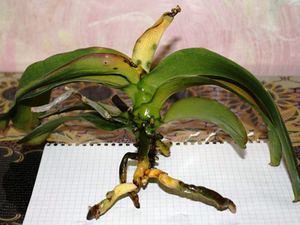 Care during the formation of peduncle buds mainly consists in proper feeding of the plant. Common substances are suitable as fertilizer for orchids. Mostly types of orchids such as phalaenopsis requires a large amount of potassium, magnesium, phosphorusbut as little nitrogen as possible. That is why potash fertilizers are perfect.
Care during the formation of peduncle buds mainly consists in proper feeding of the plant. Common substances are suitable as fertilizer for orchids. Mostly types of orchids such as phalaenopsis requires a large amount of potassium, magnesium, phosphorusbut as little nitrogen as possible. That is why potash fertilizers are perfect.
Many are worried about another question, namely the timing of the flowering of phalaenopsis. No one will tell the exact answer, because each variety and even each the flower has its own individual modethat adapts to the conditions of the terrain. More specifically, factors such as temperature fluctuations, the amount of sunlight and watering can significantly alter flowering times.
In most cases, a mature plant blooms once a year, while the flowering period does not exceed 2-3 months. Although there are varieties of orchids, where is it begins to bloom in the summer, and the end of flowering occurs in early spring. Some varieties bloom 2-3 times a year. You can determine the exact mode of your orchid in one year, the main thing is to remember or write down all the changes that occur to the flower.
If an orchid simply refuses to bloom for a year or two years, then this is clearly a deviation from the norm, and the reason for this phenomenon should be found.
How to make an orchid bloom
There are at least two ways that can help stimulate the plant to bloom. As a rule, this is the creation of favorable, but extreme conditions for the orchid. Of the methods of stimulation, there are:
- temperature changes;
- drought.
For example, we will take the most common phalaenopsis variety, which copes well with such extreme conditions. It is only important to remember that such measures can be used only after the plant has gained enough strength and rested from the past flowering.It is impossible to force the plant to bloom immediately, after the previous flowering, it is impossible, because due to a lack of strength, it can simply die from artificially created extreme conditions.
Using temperature differences to stimulate flowering
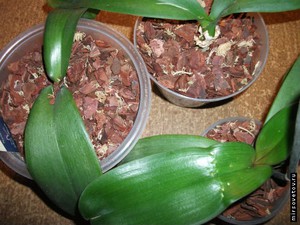 It is possible to stimulate the flowering of phalaenopsis with the help of temperature changes, but not in any season of the year, but only in spring when the air temperature at night warms up to 16 degrees. At that time the orchid is installed on the street or on a non-glazed balcony... In the daytime, the flower is kept at home at room temperature. You can leave the plant outside, but, most importantly, avoid direct sunlight.
It is possible to stimulate the flowering of phalaenopsis with the help of temperature changes, but not in any season of the year, but only in spring when the air temperature at night warms up to 16 degrees. At that time the orchid is installed on the street or on a non-glazed balcony... In the daytime, the flower is kept at home at room temperature. You can leave the plant outside, but, most importantly, avoid direct sunlight.
Temperature fluctuations cause the onset of day and night. With this option, the orchid receives a large amount of carbon dioxide, which stimulates the flowering and growth of the green mass.
It takes only 2 weeks for the stimulation with temperature changes to help the orchid bloom. A similar the procedure can be carried out in summer, but here the temperature drops are not so sharp, which means that the procedure itself is stretched for 3-4 weeks.
Using drought to stimulate flowering
You can only force an orchid to experience dry conditions when the flower is in a period of active growth. Actually stimulation in this case just slightly shifts the flowering time... Negative consequences can occur only if the air temperature is above 30 degrees.
The essence of the technique is to water the plant as little as possible. If earlier you had to do watering immediately, as soon as the soil became dry, then in case of stimulation you need to wait 3-4 days and only then water the flower.
This method should not be used too often, as drought negatively affects the amount of green mass and the root system.
Conclusion
The orchid can beautify any home environment, but this flower requires care and attention. To stimulate flowering, watering and creating a temperature regime should be taken into account all the rules and recommendations. You should not forget about the orchid, because in this case it can easily die within a few weeks.


